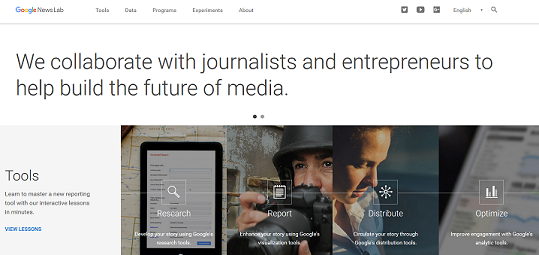In June 2015 Google announced its new initiative, the Google News Lab, as an effort to provide tools and resources for journalists. The official blog post announced it as “a new effort at Google to empower innovation at the intersection of technology and media” (June 22, 2015). These goals aligns with the Google’s official mission “to ensure quality information is accessible and useful everywhere” and “to help ensure that innovation in news leads to a more informed, more democratic world.”
According to the Verge, Google tools are “aimed at citizen journalists” “from all backgrounds” (22 June, 2015). The unveiled effort is branded as “the data for more insightful storytelling”: “as more data sets and more tools for analysis are allowing journalists to create insights that were never before possible.” The Google’s News Lab state that “there’s a revolution in data journalism happening in newsrooms today”.
These observations echo much of the rationale for the kind of research on news verification that we have been involved in at at LiT.RL.We recently wrote 3 short papers discussing 1) the new journalistic practices (Chen, Rubin & Conroy, 2015), 2) various types of fake news that seep into news media (Rubin, Chen & Conroy, 2015) and 3) potential analytical tool solutions (Conroy, Chen & Rubin, 2015) to ensure higher quality of news.
What we have been publishing about (see other works on ‘clickbait’ and the use of rhetorical structure to identify deception) is resonating with Google’s sentiment stated below:
